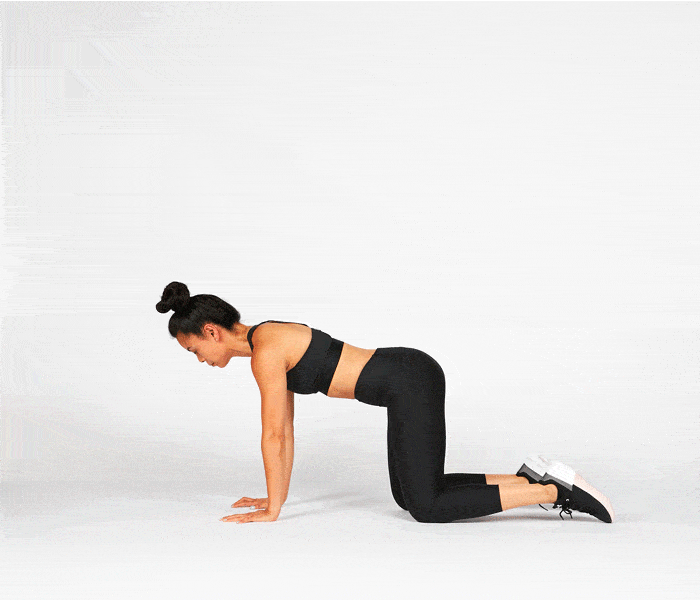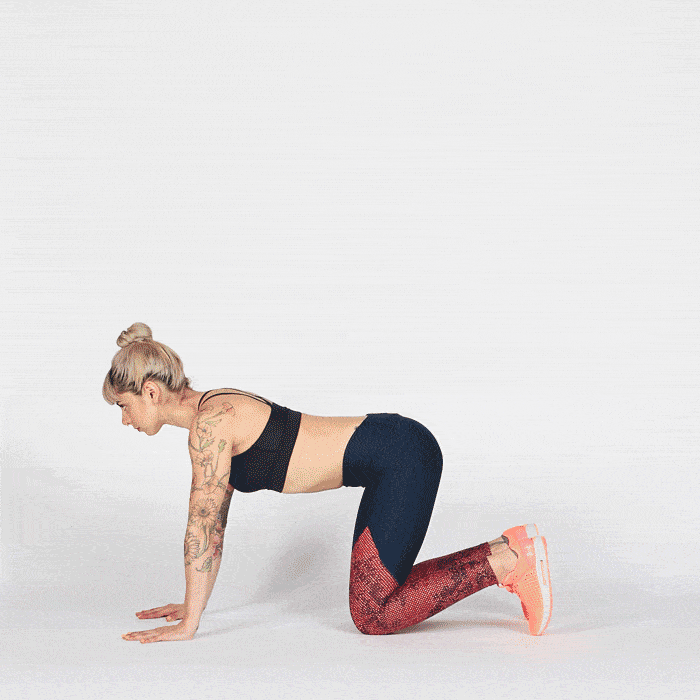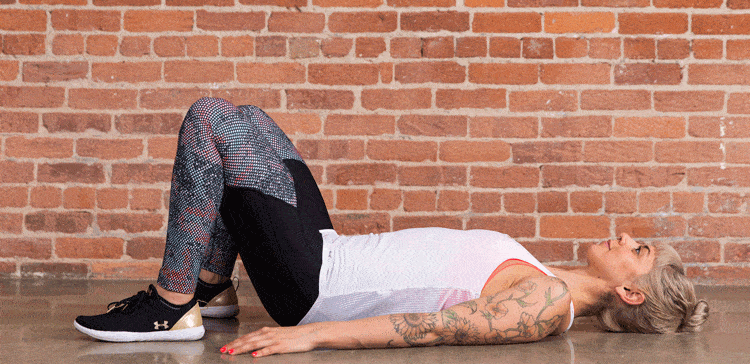We’ve all done it at some point or another: We think we can save precious time by jumping right into our workout without warming up first and then, once we’ve finished, count our post-workout shower as a cooldown. After all, we’re too busy to bother, right?
Wrong.
If you want to get an effective workout, you need to take some time to prepare your body for the work and then cool it down once the workout is over.
Still, you may be wondering: Do I really need to do both? Can’t I just prioritize one over the other and save some time?
Two experts weigh-in.
“Both [the warmup and the cooldown] are really underrated,” says Michael Piercy, MS, certified strength and conditioning specialist, IDEA personal trainer of the year 2017 and owner of The LAB in Fairfield, New Jersey. “I wouldn’t be able to get one precedence over the other.”
That said, the warmup may be slightly more important, especially as far as injury prevention is concerned.
Warmups coax your body out of that inactive, sitting-in-a-chair-all-day (or lying-in-bed-all-night) state, and into a state of exercise preparedness. If you force your cold, stiff muscles, joints, tendons and ligaments to take on loads they’re unaccustomed to, you risk pulling, tearing or otherwise injuring them. “The reality is, a lot of the injuries usually happen because we weren’t prepared for whatever the thing is that we asked our body to do,” says Nikki Naab-Levy, a certified Pilates instructor, massage therapist and fitness educator in Tacoma, Washington.
But don’t think that because the warmup is slightly more important, it means that you’re off the hook for the cooldown.
While the warmup gets your body ready for action, the cooldown returns it to a resting state. This is important because exercise puts stress on your body and you need to give your nervous system the opportunity to calm down. “It’s that homeostasis perspective of putting a body back to where it was,” Piercy says.
“I see the cooldown as this time to check back with your body and bring yourself back down to a normal state of being before you go out the door and back into your life,” says Naab-Levy.
However, according to Naab-Levy, the fact that so many people skip their cooldown is only a small part of a bigger issue. The greater problem is that many exercisers skimp on overall recovery: “They don’t give the body time to recover properly from their workouts. They do one really hard and fast thing and then the next day they do another really hard and fast thing,” she says.
If this is you, remember: Exercise breaks down your muscle tissues; recovery is the time when they adapt and rebuild to become stronger and more efficient. If you keep hitting the same muscles day after day, you don’t give them the opportunity to recover and rebuild.
Make sure you’re spacing out your workouts to allow optimal recovery. For example, if you have a long run or bike ride planned one day, give yourself a minimum of 24 hours to recover before you do a heavy strength-training workout. “Consider the muscle groups that you’re using day to day and then plan accordingly so you have both adequate time to do the things you want to do, but also adequate time to recover,” Naab-Levy says.
Hopefully, you’ve realized the importance of warming up and cooling down. Now, you just need a few pointers for doing each effectively. Rest assured: Warming up and cooling down doesn’t have to take all day.
In most cases, you can get away with spending 10 minutes on your warmup and 5 minutes on your cooldown, but ideally, you’d spend 10–15 minutes warming up and another 10–15 minutes cooling down. Just remember: The more intense the exercise (i.e., heavy strength training, sprint intervals, HIIT), the more important the warmup and the cooldown. In fact, you may want to dedicate more time to warming up if you’ve got high-intensity work planned: “You want people’s bodies to be prepared for that [high-intensity work], and then you need them to get ready psychologically too,” Piercy explains.
Now, if you’re prepping to do yoga or Pilates, skipping the warmup (or the cooldown, for that matter) isn’t as big a deal. “Your heart rate is never that high [during yoga and Pilates],” Naab-Levy says.
When warming up and cooling down, perform a series of mobility exercises to get your muscles and joints moving in different planes. Then, for your warmup, do exercises that mimic the movement patterns you’ll be performing in your workout, Piercy says. So, if you’re preparing to do a heavy back squat, begin with a bodyweight squat and tack on some lateral, front and/or reverse lunges. If you’re preparing to run, do some bounding or carioca drills.
Here are several great mobility and stability exercises you can use in both your warmup and cooldown. Spend extra time with the exercises that target your tight or weak spots.
BEAR CRAWL

Begin on the floor on your hands and knees. Keeping your back flat, initiate the movement by stepping your opposite hand and knee forward. Continue alternating sides, making sure to look straight ahead the entire time.
BIRD-DOG

Begin on the floor in a tabletop position with your hands directly under your shoulders and your knees directly under your hips. Brace your core and extend one leg out behind you while simultaneously raising your opposite arm straight out in front. Hold for a few seconds, making sure to keep your back flat and your head in line with your spine throughout the movement. Bring your hand and foot back to the floor and repeat for several reps before switching sides.
CAT-COW

Begin on all fours with your palms flat on the floor. Knees should be hip-width apart and bent 90 degrees. Gently lift your head so your back curves and hold for one count (cow). Slowly drop your head down between your shoulders and raise your upper back until it’s rounded (cat). Repeat for several reps.
GLUTE BRIDGE

Begin lying on your back with knees bent and feet hip-distance apart on the floor. Push into the floor with your heels, squeeze your glutes and lift your hips off the floor. Hold the top position for five seconds before lowering your hips back down to the floor. Repeat for several reps.
CIRCLES (ANKLE AND SHOULDER)
For ankles: Stand tall and shift your weight to one side. Lift your opposite foot off the floor a few inches. Roll the ankle of your raised foot in a circular motion, making sure to roll in both directions. Alternate feet.
For shoulders: Stand tall. Extend one arm out to the side and, without moving your torso, focus on using only the shoulder joint to move your arm in slow, controlled circles. Complete a few reps in each direction per arm.
QUADRUPED HIP CIRCLES
Kneel on the floor on hands and knees. Keeping your left leg bent, lift your left heel toward the ceiling until you feel activation in your glute. Then arc your left knee counterclockwise in a full circle before bringing it back beside your right leg. Repeat for a few reps before switching sides.
QUADRUPED WRIST EXTENSION AND FLEXION STRETCH
Begin on all fours on the floor, shoulders over your hands. With your palms flat on the floor, gently pivot your hips in small circles around your hands to loosen up your wrists. While in the same position, flip your palms up so the back of your hands are flat on the floor and gently rock back and forth in your hips.





One Response
Right, animals do warm ups all the time. The lion sees a gazelle and thinks {wait, I’d best do a warmup first before I chase it}. Does this not illustrate how ridiculous and out of touch reality the fitness industry is?